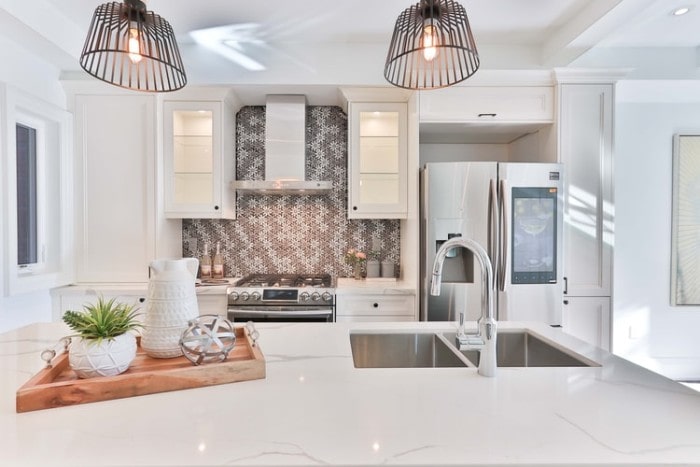
Around 90% of the population suffer from anxiety issues. A statistic that sadly is only rising with the current stressors the world is facing to date. Anxiety and stress can sometimes seem like overwhelming emotions that are impossible to shake and can have profoundly negative impacts on our lives. This is why the comfort of our homes and establishing the right environment is crucial. There are a few ways to reduce anxiety and stress at home, here are some interior design techniques that will help to create interiors of calmness and relaxation.
Colour
Colour is a well known wellbeing technique that is often used by counsellors and therapists. Different shades of different colours can induce different emotions, so not only are there colours that you should use, but there are also colours to avoid. Different people have different relationships with colours, so there’s no right or wrong answer as to what colours to use. However, making a colour page is a great way to find what colours are best for you; to do this you have to use swatches of different colours and tones and work out what colours are best for you, what makes you feel calm and serene, what makes you feel angry and what makes you feel uncomfortable. Using the colours that make you feel good is a crucial technique, add splashes of it around your home, paint the walls, use artwork décor, anything that is visible will be a great aid in reducing anxiety.
Lighting
Different lighting can invoke different emotions, similar to colour, experimenting with different lighting is a great way to find what’s best for you. More often than not, a bright white light will only add to anxiety, whereas a dull yellow light will help with calming down and relaxing. Coloured lighting is also a great way to find some kind of inner peace, from a blue light which is known to be relaxing to a red light, which is a little bit more intense and can cause a negative response.
Air purification
Breathing is a huge element of reducing anxiety, breathing techniques that include inhaling or exhaling for long periods of time are used to reduce heart rate and thus calm someone who is having an anxiety attack down. However, breathing in impure air might be defeating the purpose and can cause extra anxiety, thus keeping the air in your house pure is crucial if you want your home to be a space of anxiety reduction. Great ways to purify the air include dehumidifiers which will keep the air around your home fresh and droplet free. Another is keeping plants, it’s a well known fact that plants produce oxygen, keeping plants in your home will help with the cycle of producing oxygen and purifying the air. Plants are also great as they are a way to bring nature into your home, a well known way to keep your home serene and peaceful. Candles are also important to mention here, as the burning of regular paraffin candles can lead to impurities and toxins in the air – to solve this it’s a good idea to start using beeswax candles, which don’t impact the air around the house.
Sensory items
Anxiety can be reduced by all of the senses from sight to touch to smell. Sight includes some of the previous points like lighting and colour however, it also includes décor, using different things that help you such as artwork. Paintings that are calming and nice to look at can reduce anxiety. Touch is also a great one as interior design can do so much to help with this, from carpets to bedding using things that are comforting is a great way to maintain serenity in your home. Fluffy carpets can be very grounding, and are great ways to comfort yourself when you get into your home. Smell is also something you can add to your home that can help with relaxation, using candles, incense and air fresheners with well known calming scents such as lavender, lemon oils and rosemary.
From colour, to lighting and engaging our senses, there are a number of ways to recreate interiors that lessen our anxiety, and promote sentiments of calm.
